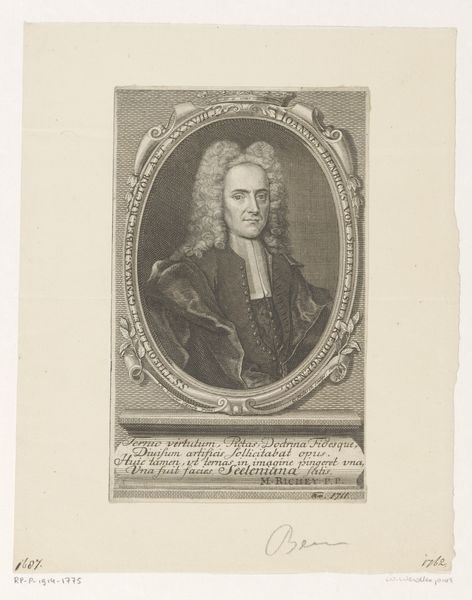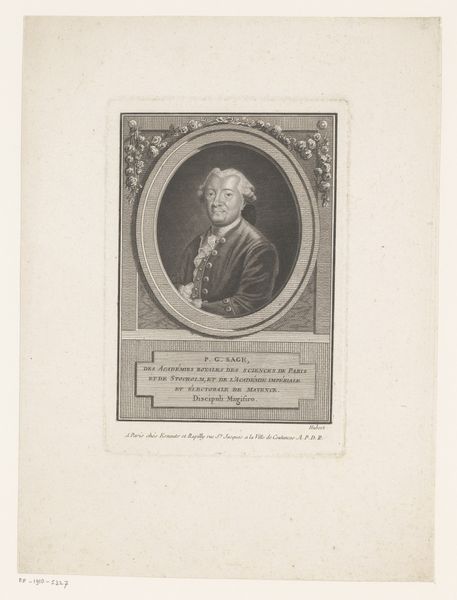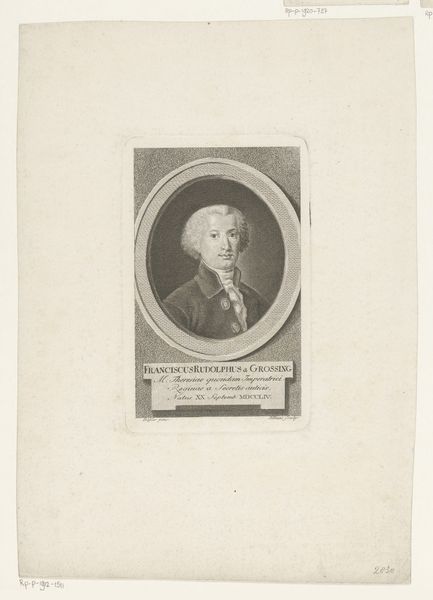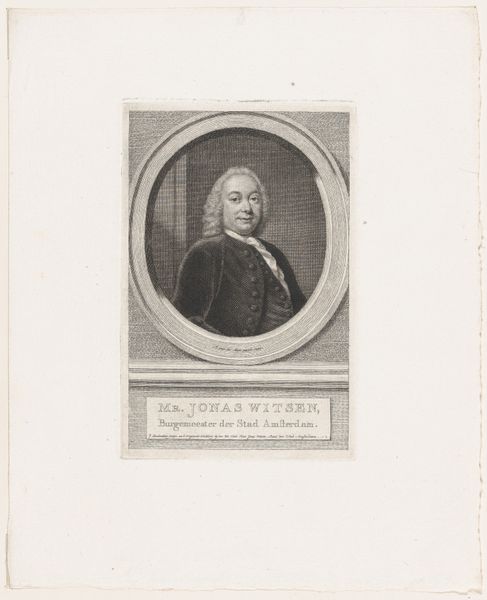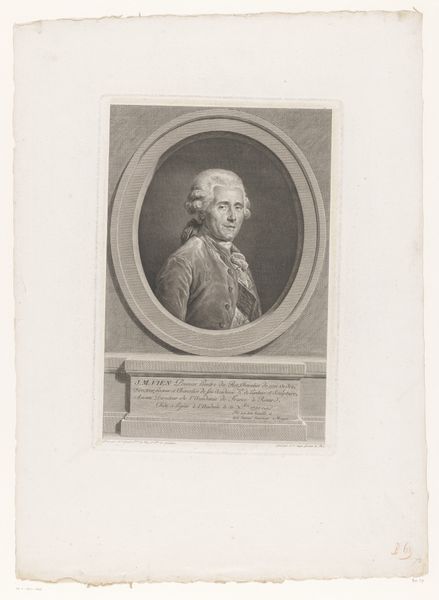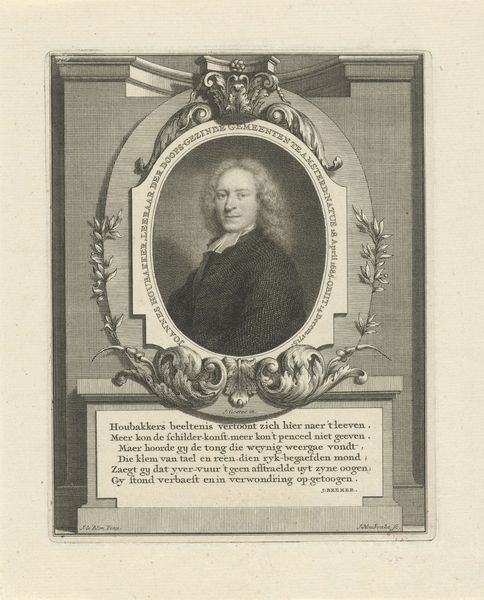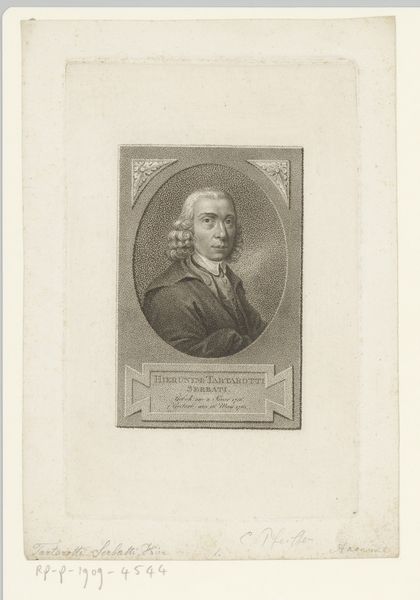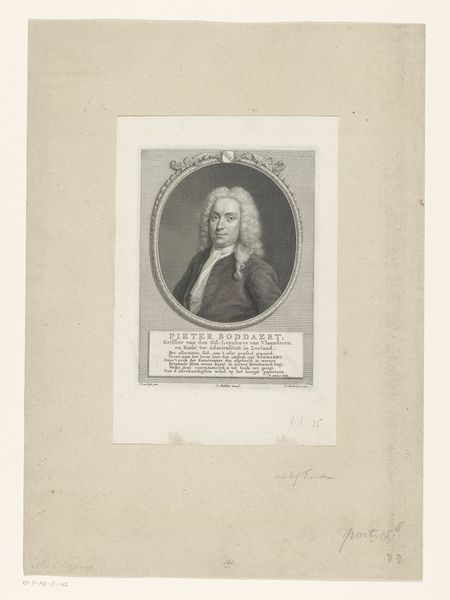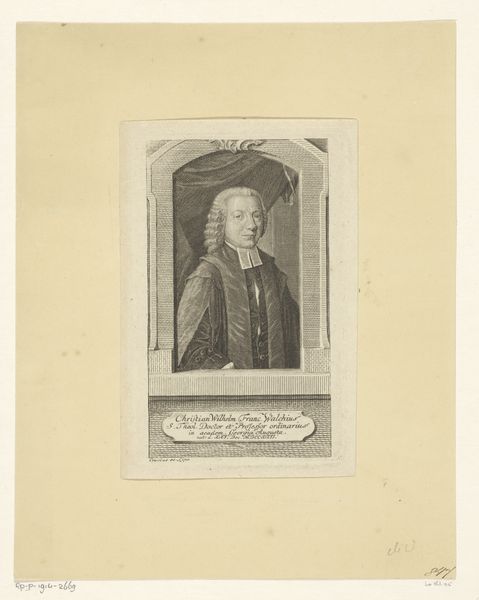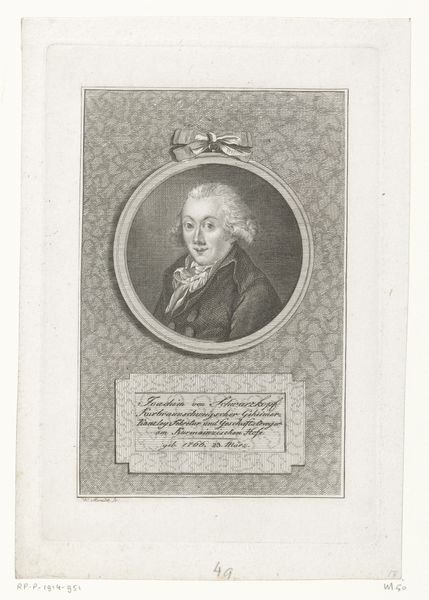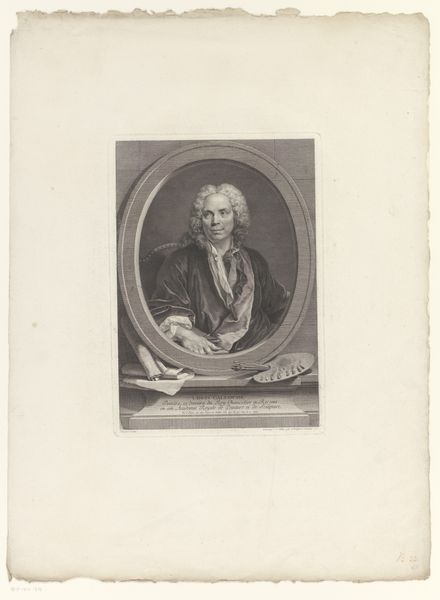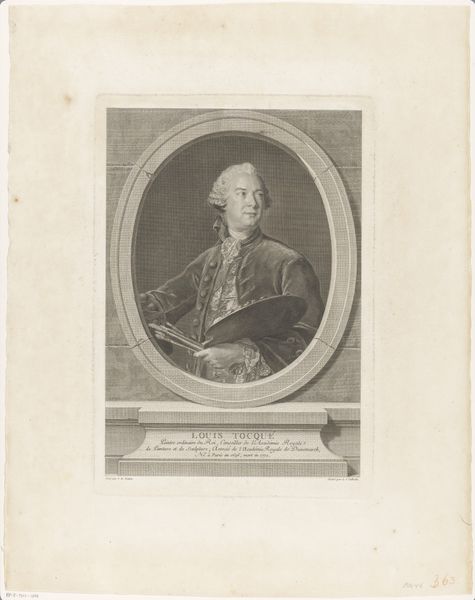
print, engraving
#
portrait
#
baroque
# print
#
old engraving style
#
line
#
history-painting
#
academic-art
#
engraving
Dimensions: height 145 mm, width 100 mm
Copyright: Rijks Museum: Open Domain
Editor: This is a portrait of Friedrich Weise, made in 1727 by Johann Friedrich Rosbach. It’s an engraving, a print. The detail is impressive, especially considering the medium. I wonder about the techniques used to achieve such fine lines and tonal variation. What can you tell me about this print? Curator: Let's consider this engraving through its materiality and production. The labor involved in creating such a detailed print—the carving of the metal plate, the inking, the pressure applied during printing—speaks to a particular system of artisanal production. How does the use of engraving as a reproductive medium influence our understanding of the portrait's subject, Friedrich Weise? Editor: That's interesting. I hadn't thought about the "reproducible" aspect. Was it meant for a broader audience? Did that affect Rosbach's approach? Curator: Precisely! Engravings like this weren’t necessarily “high art.” Consider it in relation to other printed matter circulating at the time: pamphlets, illustrations. Rosbach, by creating this print, participates in the commodification of Weise’s image, producing a good circulated throughout his society. Editor: So, you're saying its value isn't just in the artistic skill, but in how it functions within the social and economic context of its time? It challenges this established definition of high art by understanding its impact and dissemination. Curator: Exactly. The material is not neutral, and it’s directly related to labor. Look at the fine details; a lot of man-hours were needed for this, pointing to a whole structure of artistic training and workshop production. Editor: Thinking about it that way, the print seems less like a singular artistic expression and more like a record of production processes and social standing of both the portrayed person and the artist. Thanks, I've gained a new perspective on analyzing art. Curator: And I'm reminded that what we consider ‘art’ is shaped by specific cultural and material conditions, revealing the economic foundations that upheld the traditional art canon.
Comments
No comments
Be the first to comment and join the conversation on the ultimate creative platform.
